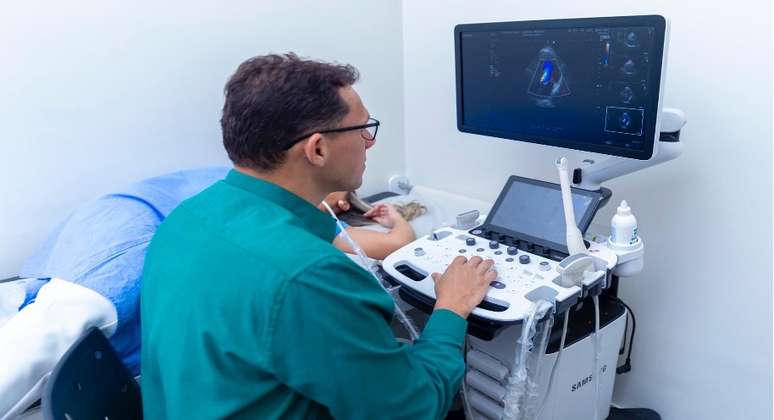The echocardiogram is a fundamental tool in the early diagnosis of heart disease, allowing the detection of structural and functional heart changes with high precision. Used widely in hospitals, offices and diagnostic centers, the examination contributes to the early identification of heart diseases, helping both in the definition of treatments and in the prevention of low events
Cardiovascular disease remains the main cause of mortality in the world, which requires increasingly early, accessible and accurate diagnosis. Second World Health Organization (WHO)Much of these dead could be avoided with early diagnosis and direct clinical strategies.
In this scenario, the echocardiogram proves to be one of the most relevant exams of modern medicine, offering a rapid and detailed evaluation of the cardiac function. The tool allows you to analyze essential cardiac parameters such as the function of the valve, the volume of expulsion and the thickness of the heart muscle. Using real ultrasound technology, its use is indicated through Guidelines for the echocardiogramFor confirmation of early diagnosis and monitoring in patients at risk, such as those with hypertension, diabetes, obesity or family history of heart disease.
According to data from Brazilian Cardiology Society (SBC)more than Three million echocardiograms They are performed every year in Brazil, helping to detect silent diseases before becoming serious.
Clinical application and impact on medical practice
“The echocardiogram is widely used in hospitals, offices and diagnostic centers, being indispensable in contexts such as heart failure, thoracic pain, cardiac murmur, preoperative evaluation and monitoring of heart -known heart disease. In addition to diagnosis, it plays a decisive role in monitoring, the clinical response, medical response and the definition of interventions. Dr. Marcelo Martins Bingel Carvalho, with a wide performance in cardiovascular medicine in Maranhão.
The exam allows a detailed analysis of the structure and function of the heart through real ultrasound without radiation. According to Dr. Marcelo Bingel, its application goes beyond the detection of consolidated diseases. “The echocardiogram is one of the most efficient ways to anticipate heart problems. It provides precious data that guide our clinical decisions with agility, which makes a huge difference in emergencies, intensive units and preventive medicine,” he says.
“Clinical practice shows that, in order to be effective, the use of ecocardiography should go beyond technique: it requires qualified interpretation, clinical judgment and integration with the patient context. When it has been applied, the examination contributes to more early diagnoses, reduction of better complications and clinical results. Therefore, it has been increasingly incorporated in emergency contexts and preventive medicine.”
The university student Carlos Henrique29, discovered an important heart change after a routine echocardiogram. “I did an intense physical activity and I started to have unusual tiredness. Thanks to the exam, they soon detected a valvulopathy. I started the treatment and today I am very well,” he reports.
Technological evolution and future prospects
“The echocardiogram undergoes significant progress. The support equipment for portable and artificial intelligence (IA) has allowed the use by the bed, in remote and domestic regions, integrating with platform platforms platforms platforms telemedicine“.
Dr. Marcelo comments on the new horizons: “The future indicates an even more convenient cardiology, integrated with state technology -arto. The portable echocardiogram with AI and connectivity support will allow diagnosis of faster, collaborative and real data, also in limited resources.”
“The incorporation of the ecocardiogram in medical practice represents a milestone in the evolution of cardiovascular care. By combining technical accuracy, medical experience and strategies based on evidence, the examination contributes to reducing mortality, improving the patient prognosis and promoting more preventive and humanized medicine”, he adds.
“These innovations aim to expand access to diagnosis, promoting more equitable and efficient assistance in cardiovascular health,” concludes the expert.
Website: https://www.instagram.com/dr_Marcelobringel
Source: Terra
Rose James is a Gossipify movie and series reviewer known for her in-depth analysis and unique perspective on the latest releases. With a background in film studies, she provides engaging and informative reviews, and keeps readers up to date with industry trends and emerging talents.






